Native and Naturalized Plants of South Texas for Urban Food Forests
 Print This Post
Print This Post
By Katherine Favor, NCAT Sustainable Agriculture Specialist
I’m a Californian born and raised, so writing a blog about native and naturalized South Texas plants is one thing I never thought I’d do. But this spring I got the opportunity to go to Texas for an entire month, to work on an urban agroforestry project, and during that time I fell in love with its amazing native and naturalized plants. These are plants that have evolved in South Texas’ hot and humid climate and that have adapted to the area’s biological and physical conditions over time, requiring little attention to keep them happy and productive. Native and naturalized plants are great choices for urban agroforestry systems such as food forests, where the goal is often to provide communities with a place to gather food and enjoy nature, while relying on as little maintenance and as few external inputs as possible.
I learned a lot about South Texas native plants from Tevin Gray, the owner and operator of Keepers of the Garden, a community food forest in Corpus Christi, Texas. This community agroforestry farm sits in the middle of bustling Corpus Christi and serves not only as a production farm, but also as an educational center for schools, a refuge for local wildlife, and a community hub. In addition to growing all sorts of fruits and veggies, Tevin has planted many types of native edible and medicinal plants throughout the food forest, in multiple vertical layers consisting of an overstory of tall trees, an understory of shorter trees, a shrub layer, an herbaceous layer, a groundcover layer, and a vine layer. He chooses plants that provide multiple benefits to the food forest. All of the plants are either edible or have medicinal properties, but they also provide other benefits to the food forest as well, such as providing shade to understory plants to help them stay cool, providing habitat to local birds, covering the soil, fixing nitrogen, etc. Each species in the Keepers of the Garden food forest has been grouped with other species into what is called a guild – defined as a grouping of plants that are placed together to create symbiotic benefits and maximum use of space.
All these plants are adapted to southern Texas’ unique climate. Corpus Christi is in the Southern Subhumid Gulf Coastal Prairies ecoregion, in hardiness zone 9b. Its climate can be classified as humid subtropical, and while its temperature is higher than 86 degrees for almost half of the year, it still experiences yearly frosts. It also can experience periods of extreme drought during some months, and periods of extreme rain from hurricanes and tropical storms during other months. Because of all the extremes that Corpus Christi endures, many crops are hard to grow. Native and naturalized plants are a safe bet in regions such as this, and that is one reason why food forests like Keepers of the Garden have decided to concentrate their production on these types of plants.
Here are just a few examples of the native and naturalized plants that Keepers of the Garden has planted, broken down by the food forest layers that they occupy.
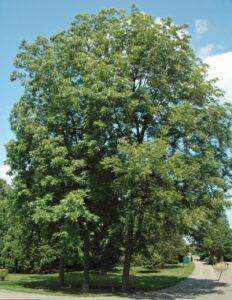
Pecan tree. Photo: Creative Commons
Overstory Trees:
Moringa (Moringa oleifera). The moringa tree is native to India but has been naturalized in subtropical regions of Texas. The seeds can be pickled or ground, and they are commonly made into a type of curry. The leaves can be eaten raw or cooked. Moringa is highly nutritious and has been purported to fight many diseases.
Native pecan (Carya illinoensis). The wild pecans native to Texas are much like the commercial varieties of pecans that most of us are familiar with, but they have slightly smaller nuts and thicker shells. Native Texas pecans produce delicious nuts for both humans and animals, and they were a staple of many Native American diets pre-colonization.
Loquat (Eriobotrya japonica). Loquats are native to China but have become naturalized in the southern United States. They produce delicious fruit that is high in both sugar and pectin, making them great not only for snacking on raw, but also for use in preserves and baked goods.
Seagrape (Coccoloba uvifera). Seagrape is a tall tree that can grow up to 30 feet tall and produces clusters of sweet fruit that resemble grapes in appearance and flavor. Native to coastal regions of the southern United States, this tree provides habitat to many native small animals. It can be used in a food forest for both its fruit production and as a windbreak.
Understory Trees:

Elderberry. Photo: Creative Commons
Elderberry (Sambucus nigra). Elderberries are native to North America and thrive in zones 3 – 9. They produce delicious fruit that is often made into medicinal tinctures, juices, and preserves.
Texas persimmon (Diospyros texana). This tree is a cousin of the persimmons most folks are used to, but instead of producing orange fruit, this tree produces deep purple to black fruit, that is sweet and soft. Unripened fruit is astringent but has use too; it was traditionally used by the Cherokee to treat wounds and sores.
Mexican olive (Cordia boissieri). This tree isn’t related to the Mediterranean olives that most of us know, but it does produce fruit that looks like olives. The fruit and flowers aren’t palatable to humans, but they attract and support birds, butterflies, and bees. The leaves have traditionally been used medicinally to treat congestion.
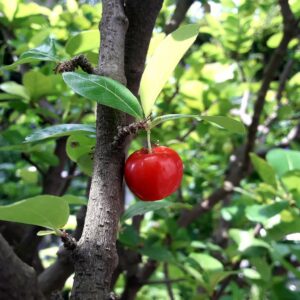
Barbados cherry. Photo: Creative Commons
Shrubs:
Barbados cherry (Malpighia punicifolia L.). Barbados cherries are small trees, usually 6-12 feet in height, and they are native to the Southern U.S. Their flowers support native populations of bees, butterflies, and birds, and they produce small, tart fruit that is great for making preserves and baked goods.
Cocoplum (Chrysobalanus icaco). Cocoplum is a shrub that grows from 3-10 feet and that produces a mildly sweet fruit, and delicious seeds that can be dried and ground into spice. It produces fruit and flowers year round, providing a consistent food source to both pollinators and humans.
Turk’s cap (Malvaviscus arboreus). Turk’s cap is a fruit-producing understory shrub native to southern Texas, that grows great in the shade of taller trees. Its flowers can be harvested and made into tea, and the fruit can be eaten raw.
Herbaceous Plants:

Chili pequin. Photo: Creative Commons
Chile pequín (Capsium annuum). This tiny yet spicy chili pepper is native to northern Mexico and Texas. It can reach spiciness levels of 30,000 to 60,000 units on the Scoville scale and is very flavorful. It can tolerate 35% shade, so it’s a good option for an understory herb layer in a food forest.
Groundcover:
Henbit (Lamium amplexicaule). Henbit is native to Eurasia but has become naturalized in the southern United States. While it’s considered a weed in many agricultural systems, in food forests it can act as a great groundcover, keeping the soil cool, moist, and covered while also producing nutritious and delicious foliage.
Vine layer:
Passionvine/May Pop (Passiflora incarnata). Passionvine is native to many parts of North and South America, including Texas. It produces beautiful flowers and delicious fruit. In a food forest, they can be planted near trees and will climb up the trunks for support.
If you’d like to learn more about what native and naturalized plants are suitable for food forests in your region, or if you’d like to learn more about food forests in general, stay posted for new resources that will be posted to the ATTRA website soon. For resources specifically on native plants, head to your local Extension office, Audubon, the Xerces Society, Native Plant Finder, and the ATTRA website.
Related ATTRA Resources:
Episode 240. Urban Agroforestry for Dryland Environments
Episode 187. Perspectives on Agroforestry with Rowan Reid Part 1
Episode 188. Perspectives on Agroforestry with Rowan Reid. Part 2
Episode 211. Native Plants Offer More Than Beauty to the Farmscape
Other Resources:
Native Plants Finder, National Wildlife Federation
The Xerces Society for Invertebrate Conservation
Native Plants, Audubon
This blog is produced by the National Center for Appropriate Technology through the ATTRA Sustainable Agriculture program, under a cooperative agreement with USDA Rural Development. ATTRA.NCAT.ORG.


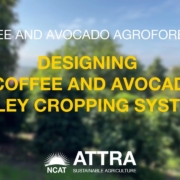

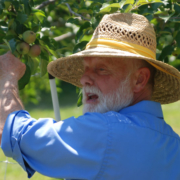


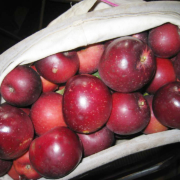
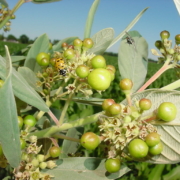
 joost.j. baker wikicommons
joost.j. baker wikicommons

